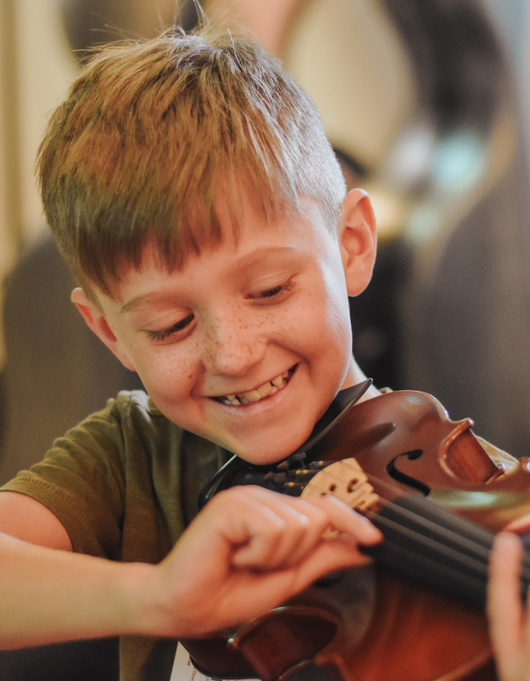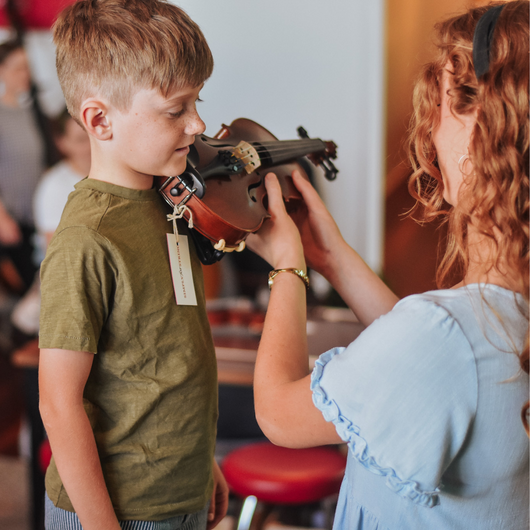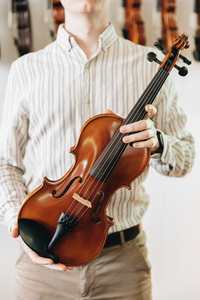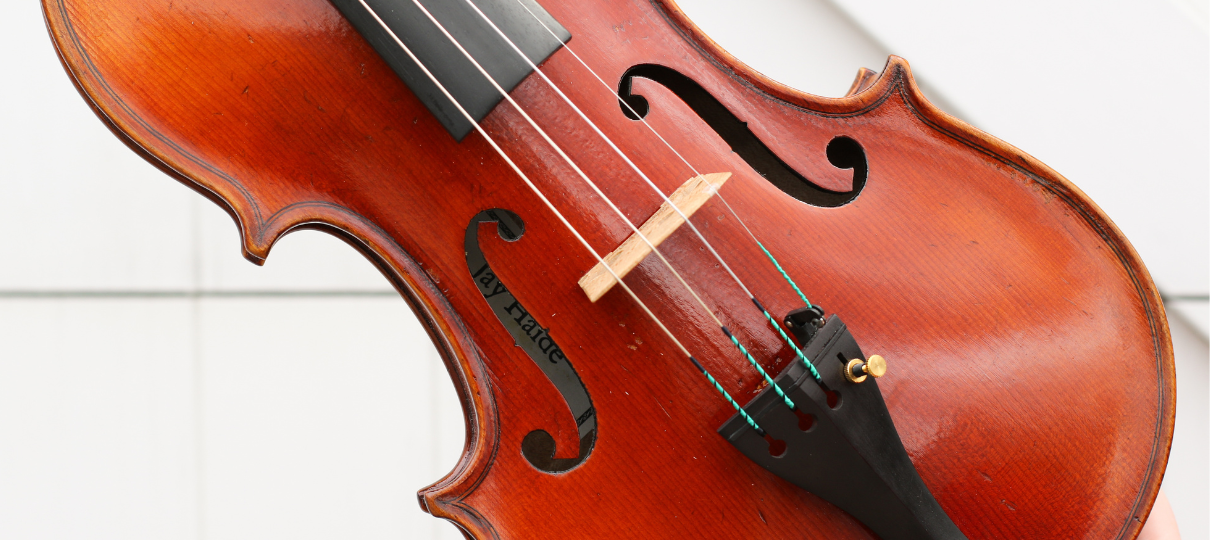Why are string instruments and their accessories so expensive? It’s a question we get asked regularly, and we thought we’d address why you do get what you pay for, when it comes to string instruments. Here are Michael’s thoughts on this topic!
Firstly, if you’re making an investment in a beginner model instrument, that’s exactly what you’ll get. Beginner is not intermediate and intermediate is not advanced. They each serve a different purpose. However, not all beginner models are created equal. There are plenty of instruments on the market that are substandard, but also plenty that are excellent entry level models with great value for your money. So, what do you need to look for then?
The Instrument Itself
Firstly, the materials used to construct the body. What timbers are being used? Watch out for violins, violas and cellos made out of plywood. The body of a string instrument should not be made out of plywood unless it’s a more affordable beginner double bass. Back, sides and neck should be maple; top is spruce. Purfling: It can be very hard to tell, but even on a low-cost correctly-made violin the purfling must be real, not painted lines. Purfling exists to protect the wood from splitting at the edges, a bit like sewing a hem on your cuffs so the cotton doesn’t fray.
The nut is a small ebony block at the top of the fingerboard, with 4 grooves for the strings to slide in as they pass over into the pegbox. This must be made of ebony. On very cheap instruments we sometimes find they have an inferior wood, painted black. The strings will cut through the softer wood over time, until they are buzzing against the fingerboard.
The fingerboard is usually made of ebony or another very hard timber, such as rosewood (although rosewood is harder to source now because of international restrictions) Cheap instruments are sometimes made with an inferior wood and painted black to pass it off as ebony. Avoid these! Ebony is thought of as fully black, but can have brown streaks through it, which is perfectly acceptable. Some factories paint the ebony fingerboard to hide the brown streaks. This isn’t a problem, but in some ways I wish they’d leave it unpainted and let you appreciate the beautiful wood in its natural state. I believe they paint it out of the belief that showing a bit of brown would reduce the saleability of the instrument. Not necessary, really!
During the setup procedure in a luthier’s workshop, the fingerboard is trimmed with knives and planes where necessary. It must be shaped correctly with just the curve so the strings will be playable. With a poor shape it will either be hard to push the strings down or they will have problems with buzzing when you play.
The pegs also need to be made from a very hard wood or they won’t stand the test of time. They are usually ebony although other hardwoods are also acceptable. With very cheap instruments we have seen a softer wood used, painted black: they often develop problems and become unusable. Pegs made with softwood can have problems with sticking, twisting out of shape and breaking, and the strings cut into soft wood too easily reducing their lifespan.

The Bridge
The bridge needs to be made from maple, needs to be reasonably well cut and correctly shaped, not too thick and not too high. Many new instruments sold through non-specialist outlets are supplied with very poor quality bridges that are not finished correctly. The feet don’t sit fully flush on the curved belly and the strings are so high the instrument is virtually unplayable.
The Tailpiece
The usual tailpiece style is lightweight cast metal one-piece with in-built fine adjusters. These work very well as a rule, but with the very cheapest instruments the tailpiece is also very cheap mass-produced, and will often fail either with a claw breaking or screw thread stripping. When you purchase from more reputable stores, such as Simply for Strings, you have peace of mind that the components will be more reliable and if there is any breakdown we can efficiently perform replacements and repairs under warranty or otherwise.
The Set Up
Set up or not set up: this can mean the difference between playable or not playable at all. Avoid buying cheap stringed instruments from online stores, supermarkets, other non-music stores, and even many music stores that don’t understand the violin family. This is advised due to the fact that they are often not set up correctly or even at all. We have seen instruments brought to us for service that had a bridge and nut so poorly carved as to render the instrument almost unplayable. We have also seen instruments purchased from non-specialist stores that had the bridge cut back to front, the strings wound on the wrong pegs, wound under the peg instead of over, and this has sometimes caused damage to the instrument.
A reputable music store will pay for a quality setup to suit the level of instrument. This setup is performed by a skilled craftsman and takes between 45 minutes and three hours, depending on the grade of instrument. As with all craftsmen, time must be paid for, so we do build the setup fee into the cost of each instrument. That is partly why here at Simply for Strings, we rarely discount and never price-match: to discount would mean having to cut corners just to stay in business.
Strings
Beginner models, even those that have been built correctly and setup well, are normally sold with the very basic strings supplied by their factory. We call these “factory strings” for that reason. Factory strings are usually very low quality, mass-produced and quite thin. Because they are thin it’s easier for a beginner to play with the left hand, but the sound they produce is unsatisfactory and will not help a beginner to progress very well. They will often squeak when bowed. At Simply for Strings, we often make a point of recommending an upgrade at the time of purchase, fitting better strings according to your preference. Most good shops will do the same. If you have already bought an inferior instrument to save money, I urge you to please invest in some more suitable strings. They will help improve the sound and playability of the instrument usually far more than you’d think. We are always happy to advise on good string choices that won’t break the bank!

The Simply for Strings Difference regarding beginner instruments
We choose all our models very carefully to ensure we can offer the best quality for each price point. We will not sell inferior instruments. Yes, some of our beginner models are quite inexpensive. However, there are many cheaper products available in the marketplace that specialists such as Simply for Strings will not even consider. Our models must meet our stringent quality standards. Learn more about our Professional Set Up that is conducted on every single instrument that leaves our store here.
So if you’ve purchased a good quality beginner instrument, what can you do to improve the sound?
If you invest in a good beginner or early intermediate model, some ways to make it even better could be:
- To have the bridge and soundpost upgraded;
- Depending on the tailpiece, an upgrade to a Wittner Ultralight tailpiece can be advantageous;
- Consultation regarding the best chinrest to suit your needs (violin/viola)
- Upgrading the strings. There is a wide variety of string sets, ranging from under $50 to over $250 (violin) and similar but more costly for viola, cello and bass. The choice of strings to suit you can make an enormous difference in the way an instrument performs;
- Upgrading your bow can also make a huge difference to the sound and to your playing;
- The choice of rosin can also help;
- We are always happy to advise on any of these ideas, and to give you quotes for any work to be undertaken.
Why would I, as a beginner, consider something other than a beginner model?
Some people starting out need to be conscious of budget, and our beginner range can be a great place to start. Other people may be in a more fortunate position and prefer to choose higher quality products in everything they buy. You may prefer to “buy well and buy once”. Within reason, the better the instrument, the better your chance of producing a great sound that pleases your ears and helps you progress more quickly. That is of course just a generalisation! However, there can be a lot of truth in it. If you can buy a more advanced instrument as your first one, it will be much longer before you outgrow it and feel the need to upgrade. We are equipped and able to help you with all your purchasing process.
Have some thoughts on this topic or need a hand choosing the perfect beginner instrument? We’d love to hear from you! Get in touch with our friendly team today.


























